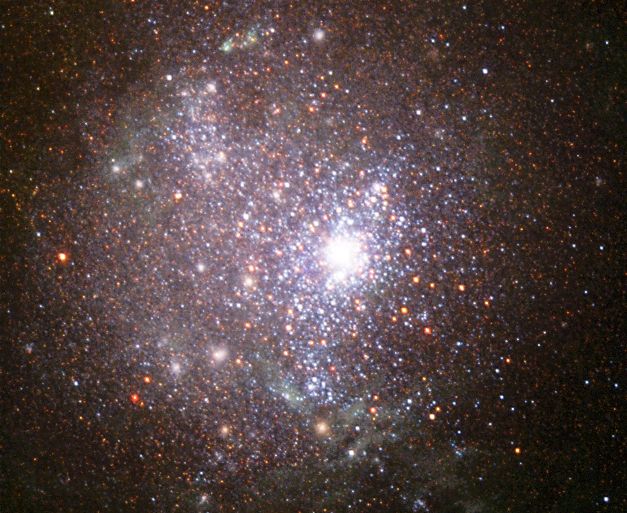Explanation: Some 2,000 light-years across, NGC 1705 is small as galaxies go, similar to our Milky Way's own satellite galaxies, the Magellanic Clouds. At a much larger distance of 17 million light-years, the stars of NGC 1705 are still easily resolved in this beautiful image constructed from data taken in 1999 and 2000 with the Hubble Space Telescope. Most of the younger, hot, blue stars in the galaxy are seen to be concentrated in a large central star cluster with the older, cooler, red stars more evenly distributed. Possibly 13 billion years old, NGC 1705 could well have been forming stars through out its lifetime while light from its most recent burst of star formation reached Earth only 30 million years ago. This gradually evolving dwarf irregular galaxy lacks organized structures like spiral arms and is thought to be a nearby analog to the first galaxies to form in the early Universe.
1999 2000 2001 2002 2003 2004 2005 2006 2007 2008 2009 2010 2011 2012 2013 2014 2015 2016 2017 2018 2019 2020 2021 2022 2023 2024 2025 |
Yanvar' Fevral' Mart Aprel' Mai Iyun' Iyul' Avgust Sentyabr' Oktyabr' Noyabr' Dekabr' |
NASA Web Site Statements, Warnings, and Disclaimers
NASA Official: Jay Norris. Specific rights apply.
A service of: LHEA at NASA / GSFC
& Michigan Tech. U.
|
Publikacii s klyuchevymi slovami:
NGC 1705 - star formation - dwarf galaxy - irregular galaxy - zvezdoobrazovanie - karlikovaya galaktika - galaktika, nepravil'naya
Publikacii so slovami: NGC 1705 - star formation - dwarf galaxy - irregular galaxy - zvezdoobrazovanie - karlikovaya galaktika - galaktika, nepravil'naya | |
Sm. takzhe:
Vse publikacii na tu zhe temu >> | |
